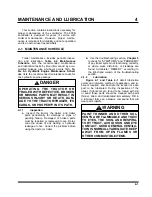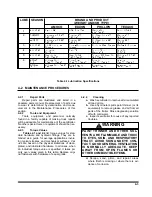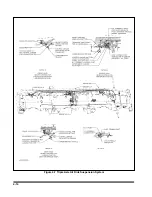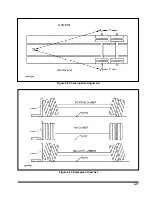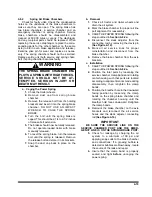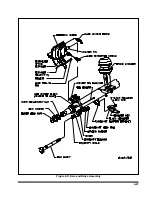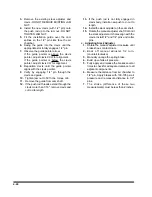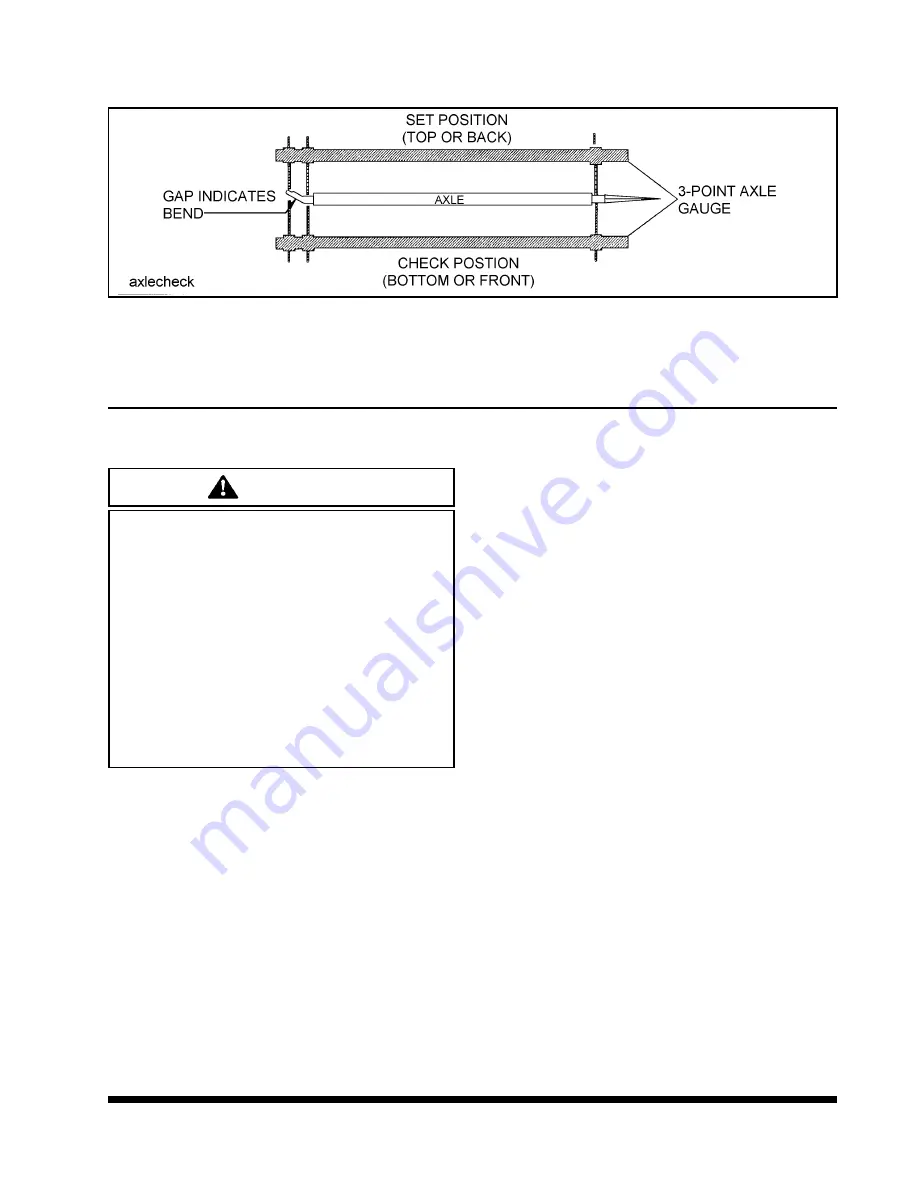
4-7 ALIGNMENT
4-7.1
Wheel Alignment
DANGER
TO PREVENT A LIFE THREATENING
ACCIDENT:
1. SUPPORT TRAILER AND UNDER-
CARRIAGE SO TIRES ARE OFF THE
GROUND.
2. SUPPORT THE TRAILER AND UN-
DERCARRIAGE ON JACK STANDS
WITH SUFFICIENT CAPACITY TO SUP-
PORT THE TOTAL WEIGHT OF THE
TRAILER AND ANY LOAD WHICH IT
MAY BE CARRYING.
When trailer tires show signs of scuffing,
feather-edging or uneven wear, examine the trailer
for damaged suspension (frame, shocks, linkage,
etc.), axle, wheel bearings and wheels. Proper
wheel alignment and wheel bearing adjustment is
essential for proper tire wear. The simplest form of
checking wheel alignment “toe” is by running the
trailer over a “SCUFF GAUGE”. A scuff gauge
reading of 16 feet or less per mile is considered
satisfactory. If a scuff gauge is not readily avail-
able, or edge wear on one side of a tire is occur-
ring signifying positive or negative camber, align-
ment can be checked as follows:
a.
Remove wheel, hub and bearing assem-
blies.
b.
Place a 3-point axle gauge against the front
side of the axle, and adjust each axle gauge
point to the axle. (Double point end against
the inner and outer wheel bearing surfaces of
the spindle being checked and the other point
on the inner bearing surface on the other
spindle.)
(See Figure 4-8).
c.
Move the axle gauge and place against the
back side of the axle. If either of the points of
double point end fails to touch the axle sur-
face, a bent spindle is evident. A point gap of
.015" or more is considered excessive tire
“toe” and the axle must be replaced
(See Fig-
ure 4-8)
.
d.
Follow the same procedures as in
Section
except place the axle gauge
above and below the axle. If gauge point gap
is found, the axle has positive or negative
camber. The trailer axle has no camber from
the factory. If it is found to have positive or
negative camber, axle replacement is neces-
sary
(See Figure 4-10
for examples of cam-
ber).
4-15
Figure 4-8 Checking Axle for Bend
Summary of Contents for 600B Series
Page 8: ......
Page 12: ......
Page 14: ...3 2 Figure 3 1 Front Trailer Terminology Figure 3 2 Rear Trailer Terminology...
Page 18: ...3 6 Figure 3 4 Hydraulic Controls...
Page 26: ...3 14 Figure 3 7 Steps for Loading and Unloading...
Page 32: ...3 20 Figure 3 10 Dock Leveler Operation...
Page 38: ...3 26 Figure 3 14 Rear Impact Guard and Antilock Brake System...
Page 42: ...4 2 Figure 4 1 Lubrication Points...
Page 48: ...4 8 Figure 4 3 600B Wiring Diagram...
Page 49: ...4 9 Figure 4 4 Remote Wiring Diagram...
Page 52: ...4 12 Figure 4 5 Tandem Axle Air Ride Suspension System Figure 4 6 Air Ride Height Adjustment...
Page 54: ...4 14 Figure 4 7 Triple Axle Air Ride Suspension System...
Page 57: ...4 17 Figure 4 9 Checking Axle Alignment Figure 4 10 Examples of Camber...
Page 61: ...4 21 Figure 4 13 Axle and Brake Assembly...
Page 71: ...4 31 Figure 4 21 Dock Leveler Leg Assembly...
Page 73: ...4 33 Figure 4 22 Crank Landing Gear Assembly...
Page 84: ...NOTES 5 10...

